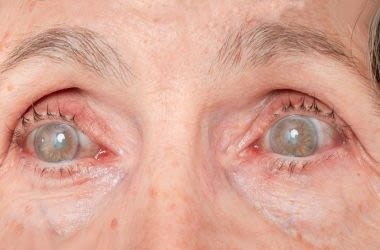
Diabetic retinopathy is the leading cause of blindness in working-age adults. This condition is caused by high blood sugar levels that damage the retinal blood vessels. The resulting damage can lead to blurred vision, loss of vision, and even the development of new blood vessels, which can cause even more problems. It typically affects both eyes. Fortunately, treatment is generally easy and inexpensive. In many cases, the condition can be reversed on its own.
The earlier the disease is detected, the better. A detached retina is a medical emergency. A patient with diabetes should visit their doctor immediately. A detached retina can cause serious vision loss and may require surgery. Laser therapy can be performed to destroy the leaking blood vessels. When treatment is delayed, the disease can lead to permanent damage. But if it is caught early enough, the risks are minimal. This treatment is quick and painless, and patients can often be discharged the same day.
In the later stages, patients may experience blurred vision. A more severe case of diabetic eye disease is called perivascular retinopathy (PDR). The retina begins to grow new blood vessels. These fragile blood vessels often bleed into the vitreous, which causes blurred vision. The resulting scar tissue can also cause problems with the macula or even the detached retina. PDR can also lead to the loss of central vision.
Advanced diabetic eye disease may lead to the development of a detached retina, which is a medical emergency. Despite the high risk, if treated promptly, patients will notice an improvement in their vision within a week or two. If the disease is not caught in its early stages, it may require surgery. Thankfully, these procedures are fast and painless, and patients will be able to walk out of the procedure the same day.

A high blood sugar level can cause a number of problems, including vision loss and blindness. As a result, the blood flow to the eye will be disrupted, and the retina will suffer serious damage. The deteriorating retina will eventually result in glaucoma, and the resulting vision will be permanently damaged. The sooner you seek treatment, the better. The earlier you start addressing the underlying problem, the better.
Progressive diabetic eye disease is a serious condition that can lead to blindness. This can lead to vision loss and even complete blindness. In some cases, the disease can lead to blindness. For those suffering from this condition, it is best to see an ophthalmologist for examination. A specialist will be able to diagnose any existing problems and treat them in a timely manner. Regular annual eye exams are important to ensure that your eyes are healthy and a good candidate for laser treatment.
When diabetes causes high blood sugar levels, the trabecular meshwork of the retina becomes damaged. This causes fluid to accumulate inside the eye, and the high pressure can damage the optic nerve. This is the most common form of diabetic retinopathy and is progressive and can lead to blindness. The more advanced the disease, the more severe the vision loss can become. Your doctor Nittaya Suttikul may prescribe treatment depending on your symptoms and the severity of your condition.
People with diabetes are usually diagnosed early. If the problem is caught early, you can treat it and prevent vision loss. It takes up to three months for this disease to fully recover. If you notice any signs of diabetic eye disease, contact your ophthalmologist immediately. Your doctor will be able to detect any abnormalities or prevent further damage to your vision. Be sure to see an eye doctor if you notice any vision problems.
Diabetic eye disease can cause abnormal blood vessels in the eye and lead to vision loss. The problem is more severe in people with diabetes than in people without it. If you have a family history of diabetes, you are at greater risk of developing the disease, even if you have no symptoms. This is a sign that you have diabetes. Your eye doctor should also be aware of any changes in your vision.